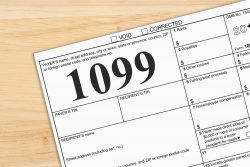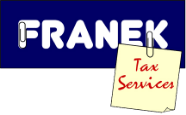The Internal Revenue Service today reminded self-employed individuals, retirees, investors and others who pay their taxes quarterly that the first estimated tax payment for tax year 2019 is due Monday, April 15, 2019, for most taxpayers. A 2018 tax return and 2019 Form 1040-ES, Estimated Tax for Individuals, can help these taxpayers estimate their first quarterly tax payment.
The Tax Cuts and Jobs Act changed the way tax is calculated for most taxpayers, including those with substantial income not subject to withholding. The law changed tax rates and brackets, revised business expense deductions, increased the standard deduction, removed personal exemptions, increased the child tax credit and limited or discontinued other deductions. As a result, many taxpayers may need to raise or lower the amount of tax they pay each quarter through estimated tax payments. The 2019 Form 1040-ES and instructions include inflation adjustments for the standard deduction, income tax rate schedules for tax year 2019 and a worksheet to help taxpayers figure estimated tax payments correctly.
A companion publication, Publication 505, Tax Withholding and Estimated Tax, has additional details, including worksheets and examples, which can help taxpayers determine whether they should change their withholding or make estimated income tax payments. This publication may be helpful for those who have dividend or capital gain income, owe alternative minimum tax or have other special situations.
THE WHO – Should I be Paying Quarterly Taxes?

Most often, self-employed people, including some persons involved in the sharing economy, need to pay quarterly installments of estimated tax. Similarly, investors, retirees and others – a substantial portion of people whose income is not subject to withholding – often need to make these payments as well. Besides self-employment income, other income generally not subject to withholding includes interest, dividends, capital gains, alimony and rental income.
Because the U.S. federal income tax is a pay-as-you-go tax, taxpayers are required to pay the tax as they earn or receive income during the year. If a taxpayer didn’t pay enough tax during the year, either through withholding or by making estimated tax payments, the taxpayer may normally have to pay a penalty. Recent major tax law changes affect most taxpayers, and while the vast majority are on track to receive a refund, others are finding that they owe on their taxes. Many taxpayers who owe for 2018 may qualify for a waiver of the estimated tax penalty that normally applies.
For 2019, an estimated tax penalty will generally apply to anyone who pays too little tax, generally less than 90 percent of the tax reported on their 2019 income tax return, during the year through withholding, estimated tax payments or a combination of the two. In addition, individuals who base their payments of estimated tax on last year’s tax will not be subject to a penalty if they pay 100 percent of the tax reported on their prior year’s return (110 percent if their income was more than $150,000).
Exceptions to the penalty and special rules apply to some groups of taxpayers, such as farmers, fishermen, casualty and disaster victims, those who recently became disabled, recent retirees, and those who receive income unevenly during the year. See Form 2210 and its instructions for more information.
THE WHEN – When Are the Estimated Taxes Due?
For tax year 2019, estimated tax payments are due from individual taxpayers on April 15, June 17, Sept. 16 and Jan. 15, 2020. Taxpayers who have not yet filed their income tax returns and are due a refund of their 2018 federal income tax may be able to reduce or even skip one or more of these payments by choosing to apply their 2018 tax overpayment to their 2019 estimated tax. See Form 1040 and its instructions for more information. Taxpayers in presidentially declared disaster areas may have more time to make these payments without penalty. Visit the Tax Relief in Disaster Situations page for details.
THE WHERE
The fastest and easiest way to make estimated tax payments is electronically using IRS Direct Pay or the Treasury Department’s Electronic Federal Tax Payment System (EFTPS). For information on other payment options, visit IRS.gov/payments. For those who choose to pay by check, it must be made payable to the United States Treasury.
If you haven’t already calculated your quarterlies, Don’t Panic, Call Joe Franek (919) 637-6731.
